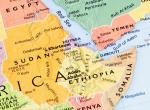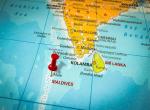Salience of West Asian Economy
The North West Indian Ocean Region encompasses the Arabian Sea and stretches from the Gulf of Oman to the Persian Gulf, through the Straits of Hormuz, while the Bab-el-Mandeb connects the Gulf of Aden to the Red Sea and then to the Suez Canal. The Arabian Peninsula and the Horn of Africa form the littoral in the West and South, with the Iranian and Makran coasts continuing on to the Indian peninsula as the northern and eastern littoral. 1
This region is of critical importance to the Indian economy. To begin with, a large portion of the Indian diaspora works here. Their remittances ensure buoyancy to our foreign exchange reserves by partially funding India’s trade deficit. Additionally, the bulk of India’s hydrocarbon requirement is met from imports from these countries, a position which as per present trends, is likely to continue, in the foreseeable future.
It is thus imperative that India uses all the instruments at its command to protect and secure its interest in the region. However, our geo-political maneuverability, though necessary and important, has limited leverage. Given this constraint, India has no option, but to use all available economic instruments (collectively known as geo-economics), to safeguard and promote its interests in the region. Examples of such instruments are trade policy, investment policy (for both outward and inward investment such as Foreign Direct Investment Policy), opportunities arising out of imposition of sanctions, fiscal policy, strength in Information Technology (IT) and IT enabled Services and so on. Therefore, a few examples of how other countries have used these instruments in this region would illustrate the efficacy of geo-economics.
Events Leading to the Signing of the Red Line Agreement
About a century back, in 1916, even before the Great War ended, the Sykes-Picot Agreement was signed. Under the terms of the Agreement, Britain and France decided to carve out the Ottoman Empire between themselves, delineating their respective areas of domination. Mosul (where a century later ISIS declared the formation of a Caliphate), fell in France’s share.
Planes, tanks, lorries, warships running on oil had played a decisive role in the Allied victory. The taxi armada not only halted the German advance, but also pushed them back and created the stalemate of the trench warfare which was broken by the introduction of the tank. After the end of the war, Lord Curzon famously remarked that ‘the Allied cause had floated to victory upon a wave of oil.’ Georges Clemenceau, the French premier who once famously said before the War, “When I want some oil, I’ll find it at my grocer’s”. By the end of 1917, he declared that gasoline was “as vital as blood in the coming battles.” After the war ended he agreed to give up French claim to Mosul for a stake in the Turkish Petroleum Company (TPC), which had the mandate to search for oil in Mesopotamia. In 1920, in exchange for Mosul, the French Government got a 25 percent stake in TPC, the forfeited shareholding of Deutsche Bank.
The American companies were denied participation in TPC. United States of America (US) then passed the Mineral Leasing Act in 1924. This denied drilling rights on publicly owned lands in the US to any foreign company whose parent government discriminated against US companies. Within four years, an American company got a 23.75 percent stake in TPC. The shareholders then signed the Red Line Agreement, agreeing not to compete with each other in an area, which stretched from the Suez Canal to Iran, and which was delineated by a red line.
The Suez Canal Crisis, 1956
Forty years later, in retaliation to the decision of the World Bank (at the instance of USA) to cancel the loan for the Aswan Dam, President Nasser of Egypt ordered the Egyptian forces to occupy the Suez Canal area on July 26,1956. The Suez Canal Company was jointly owned by the British Government and French shareholders. Diplomatic efforts failed to persuade the withdrawal of Egyptian forces. A military intervention thus took place followed with invasion of the Sinai Peninsula by the Israeli forces on 29th October, 1956. The delayed landing of the French and British forces in the Canal Zone allowed Egypt to block the Suez Canal by scuttling ships. Simultaneously, Syria sabotaged the pipeline of the Iraq Petroleum Company. The normal supply route for three-quarter of Europe’s oil requirement was interrupted. Britain had assumed that US would step in to plug the breach caused by the disruption in oil supplies. However, President Eisenhower, apprehensive of an oil embargo, eventually let the oppressors ‘boil in their own oil’.
Simultaneously, there was a run on the British pound. Whether this was instigated by the Eisenhower administration is a matter of conjecture; what is a matter of fact, is that the International Monetary Fund (IMF), refused Britain’s plea for emergency financial aid. Squeezed by an oil crisis (made worse by the onset of winter) and Britain’s currency woes, France and Britain agreed to President Eisenhower’s condition to unilaterally withdraw from Egypt, before the emergency oil supply programme was put into effect.
Sanctions against Qatar, 2017
The most recent example of oil politics is the sanction imposed on Qatar by Saudi Arabia, United Arab Emirates, Bahrain and Egypt, accusing it of fomenting terrorism and pressurising it to fall in line. While imports fell significantly, export of Liquefied Petroleum Gas (LNG), its key export commodity, were not affected. However, exports of petroleum oils and non–petroleum products like helium have been affected. Whether these sanctions will have the desired political effect is a matter of speculation at present, time being the final arbiter.
Notable Possibilities
Before proceeding further, it is necessary to state the assumptions which underline the arguments made in this paper.
Firstly, despite an anticipated record domestic crude oil production, and resultant reduced dependence on imports from this region, US interests in maintaining its hegemonistic position will remain. Power abhors a vacuum. Space vacated by it would in all likelihood be filled by Russia. This would be anathema to the US and more so when piped gas from Qatar has the prospect of reducing European dependence on Russian gas. Since there is a global price for crude oil, any spike in its price caused by a geo-political event will also hurt the US economy. A dominant position is also required for continuance of the hydrocarbon trade in US dollars -- result of an agreement cleverly crafted by Henry Kissinger with the House of Saud in 1976. A reduced demand for petro-dollars can weaken the dollar, which for a country running a trade deficit may not be welcome. There is a belief that one of the reasons for the ouster of Saddam Hussein and Colonel Gaddafi and now Qatar was their effort to conduct hydrocarbon trade in other currencies. This great game is likely to continue.
Secondly, decisions made by the Organisation for Petroleum Exporting Countries (OPEC) will affect crude oil prices even if its market share goes below the present 40 percent since its members are divided on the collective response to low oil prices while some members continue to cheat on their production quotas.
OPEC and the Recent Fall in Oil Prices
The recent slide in oil prices began in the middle of 2014. The prices went into a tailspin after OPEC announced in November, 2014 that it would not cut production to increase prices. Reportedly, part of a Saudi Arabian led strategy to gain market share is by driving high cost US shale producers out of the market. This strategy did not bargain for the resilience of the disruptive shale technology. Prices collapsed by approximately 70 percent to about US Dollars 26 a barrel in January, 2016. At that time OPEC floated the idea of a production freeze capped at January 2016 production levels. In response, crude oil prices started rising but fell again in June 2016 since the announcement did not translate into action. Meanwhile, in May, 2016 Saudi Arabia dismissed Ali-al-Naimi, its oil minister since 1995, in a votary of maintaining the county’s production level in the face of falling prices. A production cut was first announced in September 2016 which came into effect from November 2016. Russia also joined OPEC in this endeavour. Prices have fluctuated around US Dollar 50 a barrel since then. In May, 2017 OPEC decided to continue with the production cuts till March, 2018.
Thirdly, India’s import requirement for hydrocarbons will continue to increase, more so as it embarks on an ambitious path to increase its refining capacity and reduce the emission of greenhouse gases by moving towards a gas economy. A large portion of this requirement will be sourced from this region.
Lastly, irrespective of what the protagonists of ‘Death of Oil’ may say, its economic importance continues - as a major source of primary energy, feedstock for petrochemicals and fuel for transportation – and its criticality for military operations will remain at least for the next 15 years.
Options for India
Given this background, India should endeavour to use all available economic policy interests to evolve a common destiny for the nations in this region.
It is a sine qua non to state that a country’s domestic strength determines its standing abroad. This is true for oil. India has to step up its domestic exploration, development and production efforts. The New Exploration Licensing Policy (NELP), which was in operation for 18 years has little to show in the form of outcomes. 50 percent of India’s sedimentary basin remains to be covered by a basic 2-D seismic survey. About 75 percent of the basin is unexplored. The newly introduced Hydrocarbon Exploration Licensing Policy (HELP) is a step in the right direction. It is expected to pave the way for a 10 percent reduction in the country’s import dependence by 2022, as announced by Prime Minister Modi, while inaugurating the Urja Sangam on 27th March, 2015. Reduced dependency will strengthen India’s ability to forge strategic relationships with countries in this region. This would be akin to increased policy options available to US consequent to record domestic production as a result of the shale revolution.
Alternatively, Oman India Fertiliser Project (OIFP) is one of the best example for establishing a strategic relationship. OIFP as a project nurtures strategic relationships. It provides a market for Omani natural gas and employment to its citizens as laid down in its Omanisation policy. It is an assured source of urea at a reasonable price to India. By reducing India’s import requirement in the international market, it has a downward effect on the international urea price. Since urea is under price control, it has resulted in substantial savings in subsidy outgo. A win-win situation for both countries.
In the oil sector, this could be achieved by Indian Public Sector Undertakings taking stakes in oil and gas blocks in these countries, while incentivising their Sovereign Wealth Funds (SWFs) and State Owned Enterprises (SOEs) to invest in refineries, petro-chemical plants, LNG terminals and pipelines for transportation and distribution of crude oil, petroleum products and natural gas. The best results will emerge if Indian companies from different sector come together and adopt a consortium approach while bidding abroad. Similarly, if SWFs and SOEs can be guided in the evaluation of a bouquet of projects across different sector to enable them to zero in on investment decision. However, such relationships have to be pursued with care and caution, to prevent a repeat of controversies like those surrounding Farzad B exploration block in Iran.
The pursuit to form a coalition of countries importing oil from the countries in this region needs to be pursued with greater vigour. Collective bargaining should yield better terms and conditions for purchase of crude oil. At least it will dissuade Saudi Arabia from charging a premium on crude oil price sold to Asian countries vis-a-vis European countries and US. Even though Saudi Arabia has denied this, independent studies have estimated Asian premium to range between US Dollar 1-1.5 per barrel.
Diversification of sources of supply is a standard prescription for improving a country’s energy security. This should not be pursued in isolation but a part of the overall strategy to forge strategic partnerships. While newer refineries are configured to process crude of varying compositions produced by different countries, older refineries need to be reconfigured to reduce their dependence on a particular type of crude for processing.
Natural gas presents a different kind of challenge. Unlike crude oil there is no global benchmarked price of natural gas. Even though there are regional prices like Henry Hub in US and National Balancing Point in UK, these vary widely. Further, ocean transportation requires natural gas to be liquefied. The cost of liquefaction can exceed the wellhead price of natural gas. LNG contracts are typically long term (15-20 years) with oil indexed prices and the development of a spot market would bring into play market forces. India should strive to develop a vibrant spot market, so that dependence on individual contracts based on superior bargaining power of naturally endowed nations is replaced by market determined contracts.
Finally, India needs to take advantage of the vast gas resources in and around this region -- Qatar, Iran, Turkmenistan and Russia. Transportation of surplus gas from these countries through overland pipelines is a non-starter given the prevailing security environment. Therefore, under-sea pipelines are perhaps the only viable option. Accordingly, tapping Iranian gas from Chahbahar port or through a point in Oman could be seriously considered. At some stage in the future, gas from Russia and Turkmenistan could also be transported through this pipeline.
Thus, through this paper an attempt has been made to highlight the importance of geo-economics with a few examples. These are at best illustrative. Trade policy, Investment policy, fiscal policy, Information Technology and other economic policy instruments offer plenty of opportunities for securing India’s strategic interest in this region.
(The author is a former Secretary, Petroleum and Natural Gas, Government of India)
End notes
1. Hereinafter referred to as the ‘region’.
Image Source: https://www.tripsavvy.com/cruise-destinations-red-sea-sw-asia-4061987










Post new comment